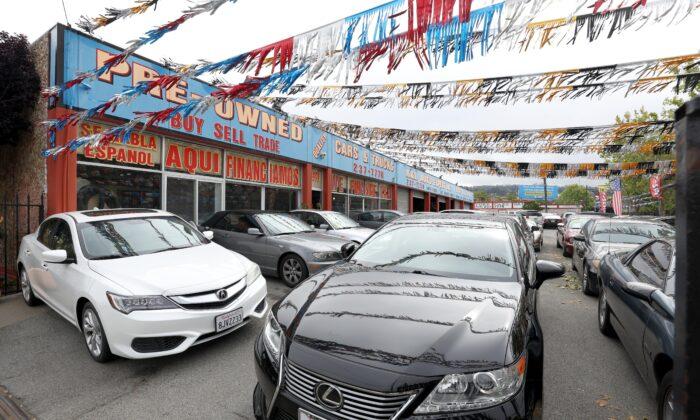Wholesale prices of used cars declined for the sixth straight month in November, after hitting record levels earlier this year, but retail prices remain stubbornly high as American shoppers face rising interest rates.
The Manheim Used Vehicle Value Index, a leading indicator of wholesale used-car prices in the United States, dipped 0.3 from October to November, down 15.6 percent from the historical high it reached in January, according to a new
report.
The year-over-year price declines were most pronounced for SUVs, crossover utility vehicles, and luxury cars, but all used vehicle categories saw prices drop compared to November 2021. Overall prices, however, are still nearly 44 percent higher than in November 2019.
Retail prices for buyers generally follow trends in wholesale prices, but listing prices are holding steady at historically lofty levels. The average used-vehicle listing price was $27,564 at the end of October, according to the most recent
data from Cox Automotive, an industry consulting firm and owner of Manheim.
That price was down slightly from the September average of $28,266, but still 2 percent higher than in October of last year. While the decline in wholesale prices should eventually help buyers, financing costs are rising due to the Federal Reserve’s repeated interest rate hikes.
The average monthly payment for a used car was $551 as of September, up 42 percent from September 2019, according to a Cox Automotive presentation (
pdf). The company projected that the average payment would rise to $567 by December.
The good news for consumers is that automakers are gradually resolving a historical shortage of new cars that drove up demand and strained inventories in the used-car market, causing prices to surge. Total U.S. supply of unsold new vehicles
reached 1.56 million at the end of October, the highest level since May 2021.
Cox Automotive estimates that retail sales of used cars
declined 1 percent from October to November and fell 10 percent year over year. Actual market sales are likely higher due to the growth in cash purchases, which have a smaller impact on the data than credit transactions. The average daily sales conversion rate was below normal for this time of year, suggesting that used-car shoppers have more bargaining power.
U.S. auto dealers generally have a
negative view of the market, saying that the economy, high interest rates, and tight inventory are holding back business, according to a separate Cox Automotive report. The company’s index of auto dealer sentiment fell in the fourth quarter to the lowest level since the start of the pandemic.





